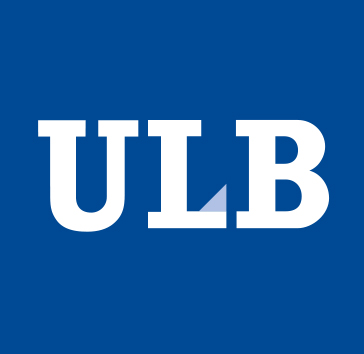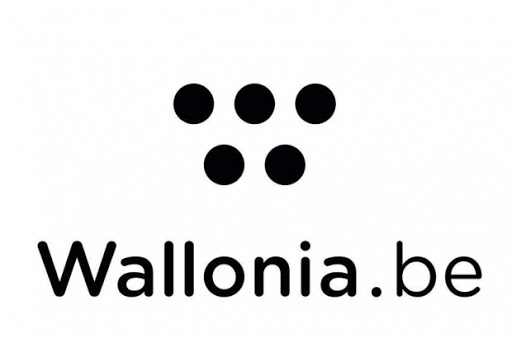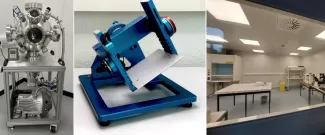The ULB is a leading university located in the heart of Brussels. It is a multi-disciplinary university covering all major fields and study cycles.

Aero-Thermo-Mechanics (ATM) - Pr. Patrick Hendrick
The ULB-ATM department is active fluid mechanics in propulsion systems for aircraft, rotorcraft, rockets and UAVs (rotor type and fixed wing type) at experimental level and CFD. Simulation of flow for reentry vehicles and alternative fuels such as hydrogen for aircraft and UAVs is also studied.
ATM has develop a strong expertise in the field of gas turbine engine lubrication systems and their specific two-phase flow (EU FP7, H2020 and CS projects) and works very closely with top industry players in Europe, offering them unique test facilities for these systems. Unique hybrid rocket engines (2 kN thrust) test facilities are also available.
Skywin Projects : INHEX, SARAH-LE, 4EQUIP
Materials Engineering, Characterization, Synthesis and Recycling (4MAT) - Pr. Stephane Godet
Research activities of 4MAT cover the entire life-cycle of inorganic materials from their synthesis and processing to the end of life. A special focus is given on optimizing the micro-structures of bulk material and thin films by studying the relationship between process parameters and material properties.
Skywin Projects : AERO+ and FASAMA (limits of Ti alloys in additive manufacturing for the aeronautical industry)
Structural and Material Computational mechanics (BATir-SMC) - Pr. Thierry Jacques Massart
The BATir-SMC research group develops advanced computational modelling methods for mechanical and coupled problems and works with the European Industry in several top EU research initiative.
The field of application covers the modelling of complex composite materials (3D woven, NCFs, Zpinned), the study of microstructural plasticity processes in multi-phase metallic materials, the modelling of lightweight materials (foams, 3D printed lattices), as well as structural health monitoring.
Bio, Electro and Mechanical System (BEAMS-Embedded Electronics) - Pr. Frederic Robert
The BEAMS - Embedded electronics research group activities focus on four major axes
- Multi-processor System-on-Chips (MPSoC) with real-time operating systems (RTOS)
- Better algorithm/architecture adequation using system-level design flows
- 3D-chips design and optimization
- Control of power electronics devices
Applications ranges from telecommunications to industrial technologies, platform, operating systems and monitoring systems.
Bio, Electro and Mechanical System (BEAMS-Mechatronics) - Pr. Christophe Colette
The BEAMS-Mechatronics team develop (conception and experimental validation) instruments and robust strategies for the active control of structural vibration of equipment such as
- large space telescopes
- Interferometric inertial sensors
- gravitational wave detectors
- Multi-degree-of-freedom nanopositioning systems
Department of System Analysis and Control Engineering (SAAS) - Pr. Michel Kinnaert / Pr. Emanuele Garronne
The SAAS laboratory research team is mainly active in two types of automation and predictive control systems.
- Model-based condition monitoring real time systems for electro-mechanical (aircraft lubrication, satellites power, Li-Ion battery,…) and industrial application (monitoring and predictive maintenance).
- Drone control and mission planning for innovative operations under constraints (sliding, manipulating, towed drones,…).
OPERA – Wireless Communications - Pr. Philippe De Doncker / Pr. Francois Horlin
The team at OPERA-WC develops new signal processing solutions for emerging digital communications systems, aiming especially at the system integration and terminal implementation. The research covers satellites (eg. digital compensation for analog front-end impairments), defense (SWS project) and IOT / drones applications.
Microgravity Research Centre - Pr. Franck Dubois
MRC main research activities concern the physics of fluids and interfaces such as evaporation, condensation, thermos-diffusion and aerosols physics. The second area of expertise of the lab is optical diagnostics, digital holographic microscopy, image processing and non-destructive testing using optical metrology.
The team has access parabolic flight facilities and has been involved in numerous ESA and NASA projects, studies and experiments performed under microgravity conditions.
Transfers, Interfaces and Processes (TIPs) - Pr. Pierre Colinet
The TIPs team research new theoretical, numerical and experimental methods allowing to understand and predict the behavior of multiphase systems, and to design or optimize industrial processes. Some of these research activities involve the development of experiments in microgravity (sounding rockets, Space Station) under ESA or EU projects.
Laboratory of Neurophysiology & Movement Biomechanics (LNMB) - Pr. Guy Cheron
The LNMB is involved in the fields of Human Space Science, BCI and basic Neuroscience. The main study areas are
- EEG and evoked potential studies during virtual navigation in the ISS
- Neural Networks & Deep Learning on brain derived signals and movement
- Brain to Brain interaction in social contexts
IGEAT-Geospatial Analysis (ANAGEO) - Pr. Eléonore WOLFF
The ANAGEO group at IGEAT-ULB Earth has developed a high level of expertise in extracting information from and interpreting high-resolution remote sensing data (aerial photos and satellite images).
The actual research is mainly oriented on mapping and monitoring human structures (land cover, land use, urban growth, refugee camps,...), demographic evolution, ecological corridors, geographical risks and vulnerability,…
Quantum Chemistry and Photophysics (CQP) - Pr. Pierre-François Coheur
The CQP field of research is gaseous atoms and molecules, isolated or in natural atmospheres. Combining ab initio calculations, high resolution spectroscopy and atmospheric remote sensing, CQP has develop pioneering research in infrared remote sensing and contributes to Earth observation satellite missions (eg. IASI (CNES) mission) and current/future space programs (eg. Venus Express).
Rue des Professeurs Jeneer et Brachet 12 CP 300
6041 Gosselies
Belgique

